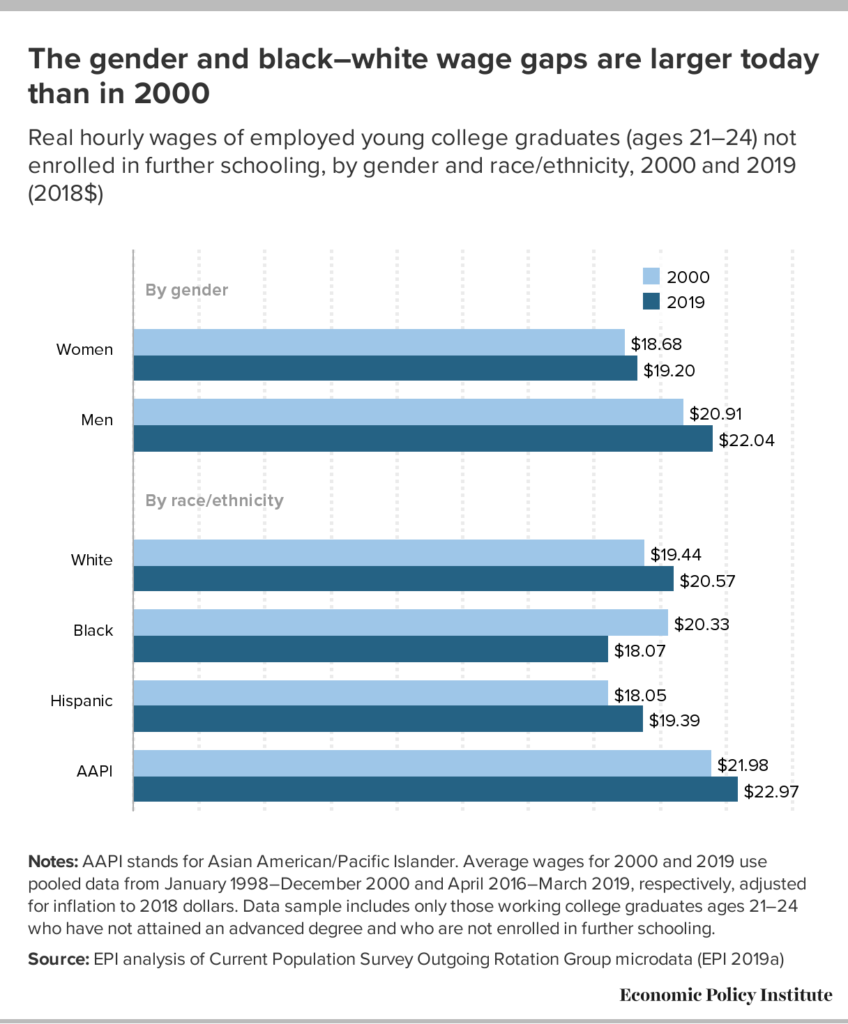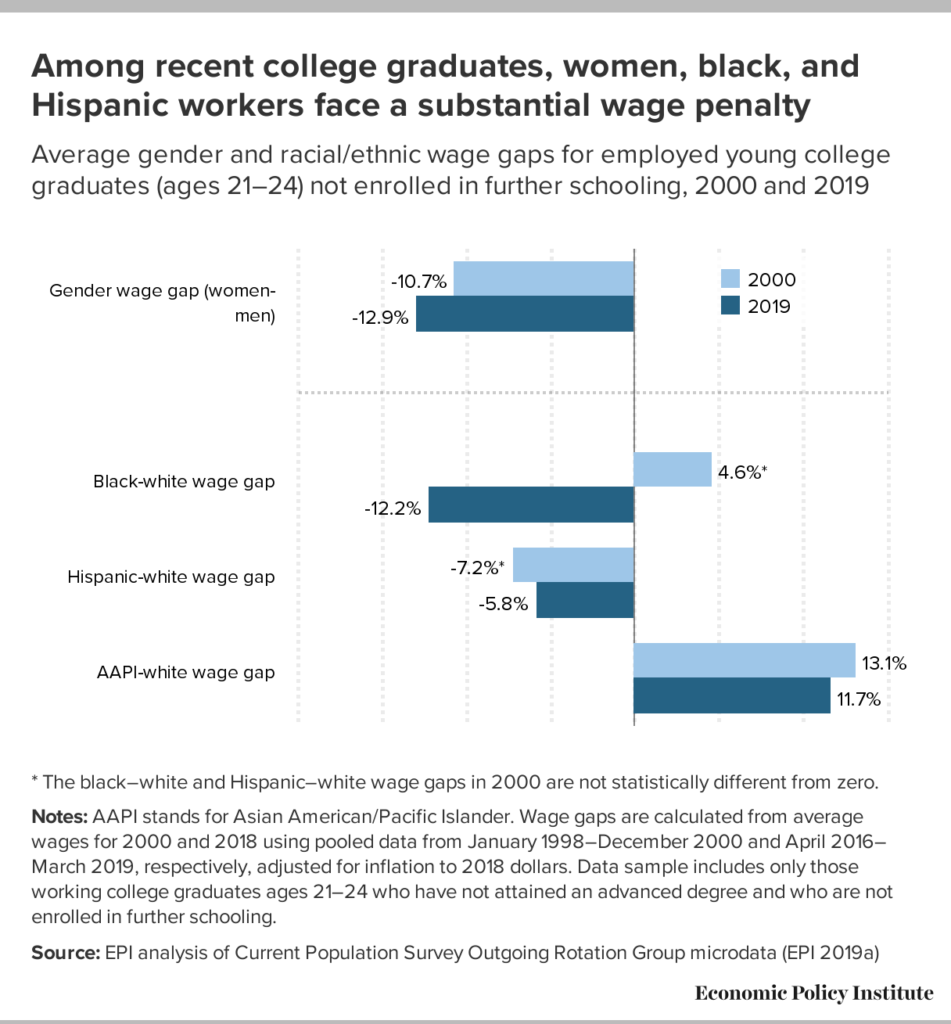
When looking at the wage gap, the data also paints an uneven playing field — but this time, white college graduates are not the main beneficiaries. Asian and Pacific Islander college grads continue to make more money than all other demographics. In 2019, Asian and Pacific Islander graduates averaged $22.97 per hour — up from $21.98 in 2000. Black college grads were the second-highest earners in 2000 at $20.33 per hour, but have actually decreased in average salary to $18.07 in 2019, which is lower than all other demographics in 2019 and almost as low as the most meager pay average in 2000, which was $18.05 among Hispanic college grads. Increasing $1.34 per hour, the Hispanic graduate population saw the biggest average pay increase from 2000 to 2019 and was the only demographic to earn more than a dollar more than its 2000 average.
“What is stunning is the sharp decline in black wages over the last several years, during the Great Recession and its aftermath,” the report reads. “Young black college graduates are the only group that saw outright declines, and these declines are quite large and economically meaningful.”

Overall, the data shows a disturbing trend: women, black, and Hispanic college grads are facing a wage penalty.
“Young women with a college degree have average hourly wages of $19.20 in 2019, just above their 2000 wage of $18.68. Over this same time, men’s wages rose significantly, from $20.91 to $22.04, an increase of just over 5 percent,” the report says. “These different trends have meant that the gender wage gap for young college graduates has grown over the last 19 years from 10.7 percent to 12.9 percent. The current gap of $2.84 per hour is not only statistically significant, but also of practical significance—it translates into about $5,900 per year for a full-time worker, a large and economically meaningful difference.”
Overall, the gender wage gap has widened from a 10.7% difference in 2000 to 12.9% in 2019. Meanwhile, the black to white wage gap has also increased dramatically over the past two decades to 12.2%. Meaning, on average, white college grads will make 12.2% more than black college grads. The wage gap has actually shrunk among Hispanic and white college grads from 7.2% in 2000 to 5.8% in 2019. The gap between white college grads and Asian and Pacific Islanders has also shrunk from Asian and Pacific Islanders making 13.1% more than white college grads in 2000 to 11.7% in 2019.

Overall, while the Class of 2019 will enter a labor market better than the past few years, it is still not to 2000 levels.
“Unemployment and underemployment rates for young college graduates remain above their 2000 levels, substantially so in the case of the underemployment rate,” the report says. “At the same time, young graduates have experienced lackluster wage growth, with the strong wage growth of the late 1990s and 2000 accounting for most of the improvements over the past three decades.”
DON’T MISS: BEST BUSINESS SCHOOLS FOR LANDING A JOB RIGHT OUT OF SCHOOL or STARTING SALARIES FOR BUSINESS MAJORS IN 2018










